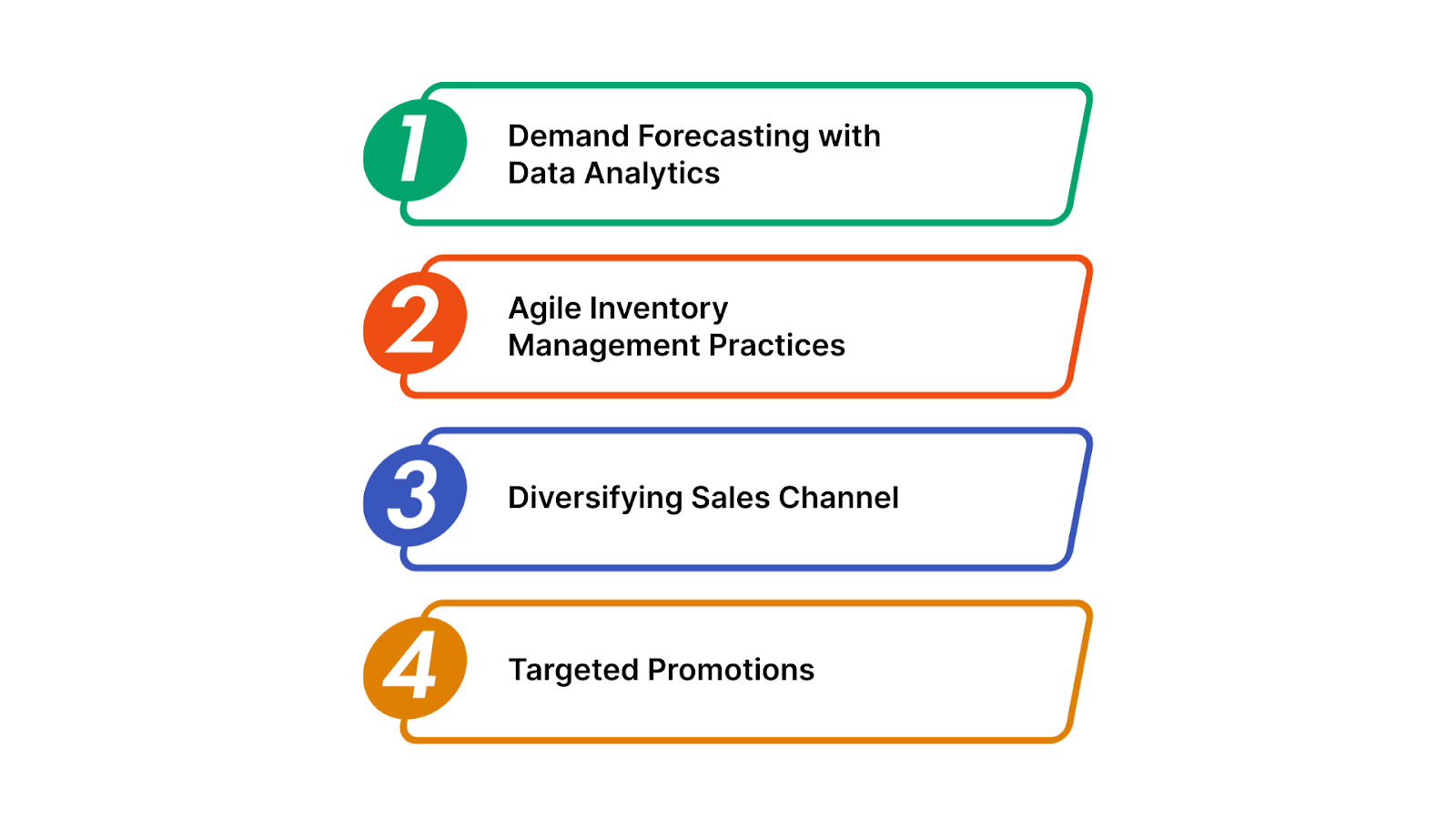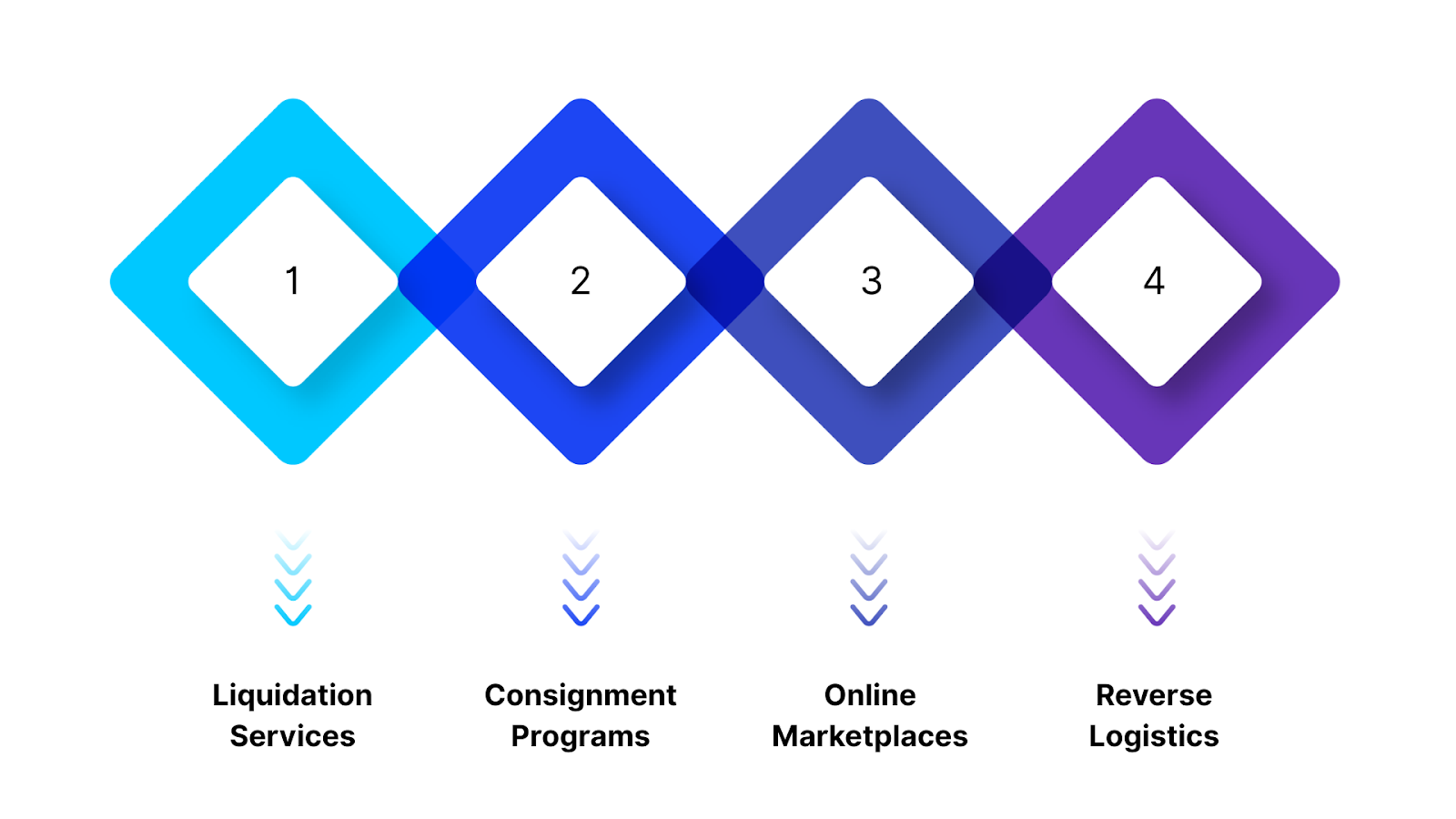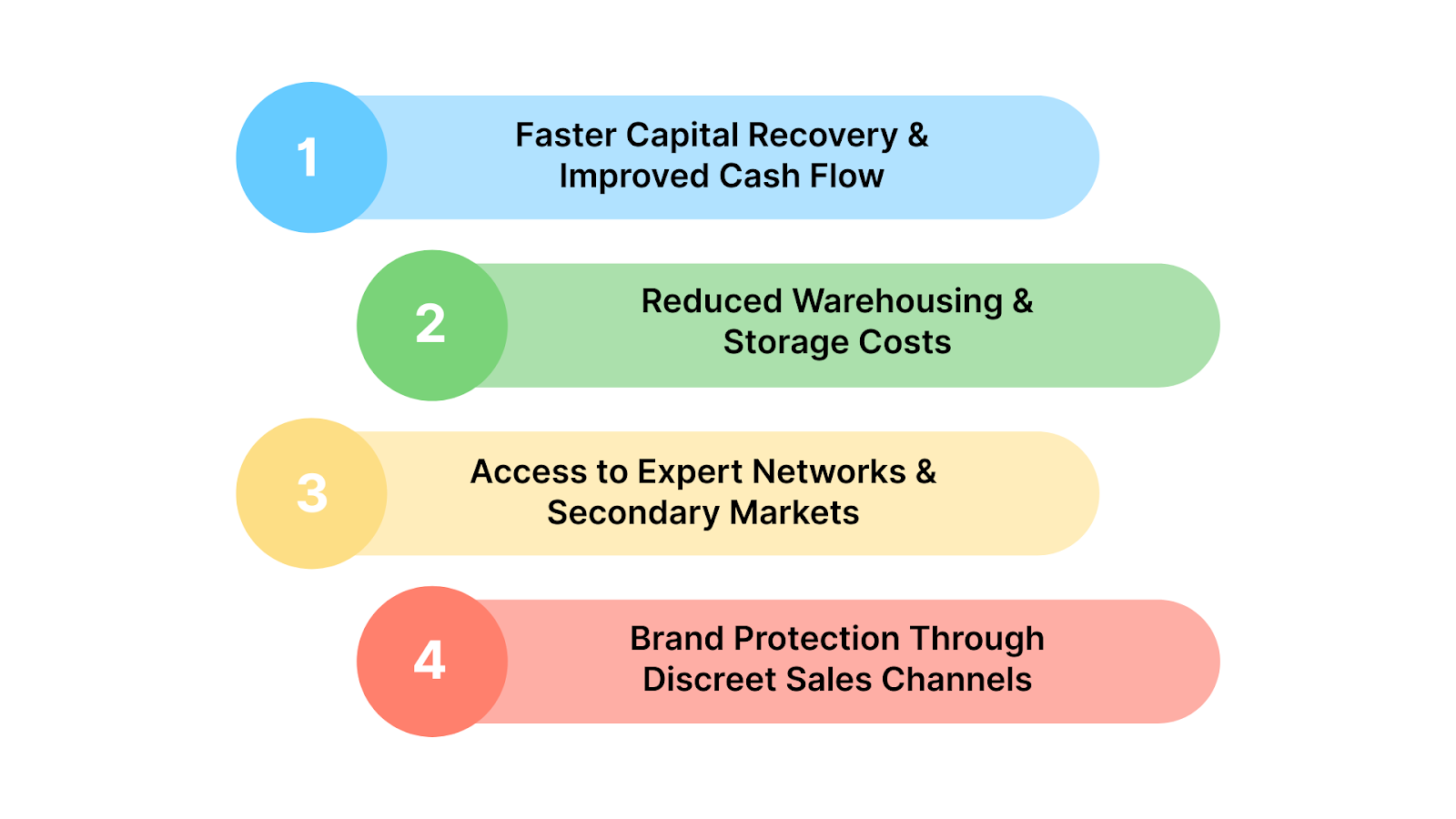
Excess inventory continues to be a costly burden for Saudi retailers, locking up valuable capital, inflating storage costs, and eroding profit margins. Studies show that holding surplus stock can increase carrying costs by 20–35% annually. In Q1 2025 alone, Saudi firms saw a collective reduction in stocks valued at SAR 35,944 million, highlighting the financial strain and urgency for better inventory management.
This surplus often results in missed opportunities, as unsold or slow-moving products take up space in warehouses, leaving less room for high-demand goods. Now, let’s explore the root causes of excess inventory before diving into practical solutions in this blog.

Excess inventory rarely happens by accident; it’s usually the result of underlying issues such as poor forecasting, inefficient stock management, or sudden market shifts. These challenges often overlap, creating a cycle of overstock that drains resources and limits flexibility.
By understanding the most common root causes, retailers can address problems at the source and adopt strategies that prevent excess inventory from piling up in the first place.
Let’s explore the key factors driving overstock and their impact on your business.
Forecasting errors are among the most common culprits of excess stock. If your projections don’t align with real consumer behavior, you may end up with too many slow-moving products. Relying on outdated methods or limited data increases the likelihood of forecasting mistakes.
Without streamlined systems, you risk poor visibility into current stock levels. This often results in duplicate orders or overlooked slow-moving inventory, both of which contribute to excess. Efficient tracking ensures you always know what you have, where it is, and how it’s performing.
Trends evolve rapidly in retail. A product that seemed promising during planning may lose appeal by the time it hits shelves. Shifts in lifestyle, economic conditions, or viral trends can instantly alter consumer interest.
Sometimes excess arises from the supply side. If your supplier requires large minimum order quantities or offers better pricing for bulk, you may end up purchasing more than needed. While this may seem cost-effective initially, the hidden cost of overstocking soon outweighs the benefits.
Retail is highly seasonal, and products tied to holidays or fleeting trends can quickly become outdated. If unsold, they may linger in your storage until the next cycle or worse, never regain relevance.


Managing excess inventory begins with improving internal practices. By focusing on demand forecasting, flexible management, and creative sales strategies, you can minimize overstocking and increase product sales. These in-house solutions give you more control over your inventory while keeping costs manageable.
Let’s move on to strategies you can apply within your own operations to prevent and manage excess inventory.
By leveraging modern analytics and software, you can access real-time data on buying patterns, seasonal trends, and market fluctuations. This enables you to make informed purchasing decisions, thereby reducing the risk of stock imbalances.
Adopting agile practices means you can respond quickly when trends shift. Whether through smaller, more frequent orders or a just-in-time inventory approach, flexibility helps prevent surplus stock from building up.
If sales stagnate in one channel, you can unlock additional value by expanding into other channels. E-commerce platforms, pop-up shops, and B2B sales networks help you reach wider audiences and move inventory faster.
Discounts, flash sales, and bundling deals can quickly clear slow-moving products while maintaining customer engagement and satisfaction. These promotions also create a sense of urgency, motivating buyers to act sooner.
When internal efforts aren’t enough, professional services like HAL ERP offer end-to-end assistance from bulk liquidation and consignment programs to strategic online sales channels, helping retailers quickly convert surplus inventory into working capital while protecting brand reputation.

While in-house strategies are powerful, sometimes you need external support to handle large volumes of excess inventory. From liquidation services to donation programs, external solutions provide access to specialized networks and markets where surplus stock can be quickly offloaded.
Let’s explore the most effective external solutions available.
Once you’ve explored these external solutions, you’ll see why many retailers turn to professional services to maximize efficiency and minimize risk.

Engaging a professional partner like HAL gives retailers access to expertise, networks, and discreet sales channels. Providers provide you with access to knowledge, networks, and discreet services that in-house teams may lack. These partnerships transform a difficult problem into a streamlined process that protects your brand and finances.
Let’s examine the key benefits that professional solutions offer in managing excess inventory.
Professional services specialize in quick turnarounds, helping you convert stagnant stock into working capital faster.
The longer the excess inventory sits in storage, the more it costs you. Professional solutions ensure inventory moves quickly, freeing up valuable warehouse space.
Experienced providers already have established relationships with secondary markets and distributors, providing you with immediate access to channels that might take years to develop on your own.
Excess stock doesn’t have to damage your brand image. Professionals use discreet channels to sell surplus without impacting your primary retail market or brand positioning.
For example, Al Homaidhi Group, a leading luxury retailer in Saudi Arabia with over 60 years of experience, faced operational challenges with its legacy system, which impacted sales reporting, inventory control, and discount handling across its more than 80 branches.
To overcome these issues, the group implemented HAL’s ERP solution, which provided real-time data access, cloud-based integration, and omnichannel support, enhancing operational efficiency and customer experience.
Best practices ensure that you not only solve excess inventory problems but also prevent them from recurring. With consistent audits, professional collaborations, and strategic ordering, you can develop a long-term strategy for effective inventory management.
Let’s look at best practices you can adopt to stay ahead of excess inventory challenges.
Audits provide visibility into what you have, what’s moving, and what’s stagnating. Frequent reporting enables you to act early, before inventory becomes unmanageable.
Partnerships with experts allow you to focus on core business operations while they handle specialized inventory solutions. This collaboration often yields faster and more profitable outcomes.
Adopting more innovative ordering practices means striking a balance between meeting demand and minimizing risk. This balance prevents recurring overstock issues. With these best practices in place, you’ll build a resilient inventory management system that adapts to both current and future challenges.
Also Read: Top Inventory Management Features to Look for in an ERP System

Excess inventory can drain capital, consume valuable storage space, and reduce profitability if not managed effectively. HAL specializes in helping retailers turn these challenges into opportunities by offering end-to-end inventory solutions that improve efficiency, unlock hidden value, and protect brand reputation.
Here’s how HAL can support your retail business:
With HAL expertise, retailers don’t just solve excess inventory problems; they build a resilient, future-ready inventory system that drives profitability, efficiency, and customer satisfaction.

Excess inventory remains a significant issue for retailers, leading to high storage costs, reduced cash flow, and potential market losses. By understanding the root causes, such as inaccurate demand forecasting, inefficient inventory management, and sudden market shifts, retailers can implement effective strategies. These include improved forecasting, agile inventory management, and utilizing multiple sales channels to maintain optimal inventory levels.
HAL offers a comprehensive solution to managing excess inventory. With its advanced data analytics for demand forecasting, just-in-time inventory strategies, and multi-channel sales approach, HAL helps retailers maintain optimal stock levels.
While managing excess inventory can be complex, combining internal strategies with HAL ERP’s solutions helps improve efficiency and profitability. Book a demo today to discover how HAL can streamline your inventory management.
1. What is considered excess inventory in retail?
Excess inventory refers to products that remain unsold beyond their expected sales period. These items tie up capital, increase storage costs, and can eventually lose market relevance.
2. Why does excess inventory hurt cash flow?
Because it locks up money in unsold goods, you have less liquidity to invest in new products, marketing, or operational improvements. Over time, this can slow business growth.
3. What’s the fastest way to get rid of excess inventory?
Liquidation services and bulk sales are the quickest options. While profit margins are lower, they free up space and recover cash almost immediately.
4. Can donating excess inventory really benefit my business?
Yes, donations can provide tax deductions and enhance your brand’s reputation for corporate social responsibility. Customers often favor businesses that give back to their communities.
5. How do I prevent excess inventory in the future?
Regular inventory audits, better demand forecasting, diversifying sales channels, and balancing order quantities are essential practices. Partnering with professional inventory solution providers can also help avoid recurring issues.